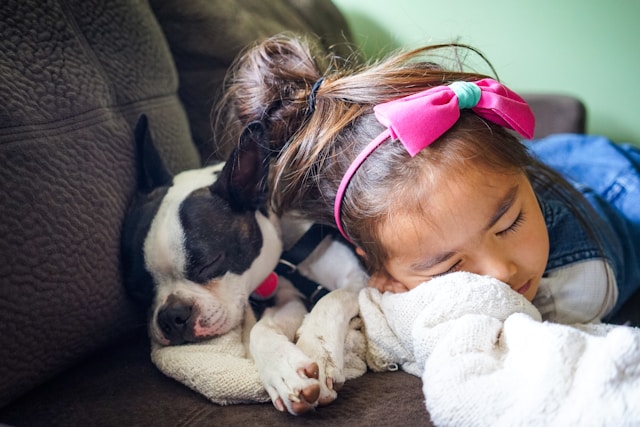Introducing a pet to your child is a joyous milestone that can provide numerous benefits. Pets teach children valuable lessons in empathy, responsibility, and unconditional love. However, it is crucial to introduce pets to children safely and responsibly to ensure a harmonious relationship from the very beginning.
In this guide, we will walk you through the process of choosing the right pet, preparing your home, and teaching your child to care for their new furry friend.
Choosing the Right Pet
Selecting the appropriate pet for your family is the first step in ensuring a positive experience. Here are some tips to help you make the right choice:
- Consider Your Child’s Age and Personality: Younger children may do better with smaller, low-maintenance pets, while older children might be ready for more responsibility. Match the pet’s temperament with your child’s energy level and personality.
- Assess Allergies: Ensure no family members are allergic to the prospective pet. Spend time with the type of animal you are considering adopting to check for any allergic reactions.
- Long-Term Commitment: Understand that owning a pet is a long-term responsibility. Choose a pet that fits into your family’s lifestyle and consider the time and financial commitment involved.
Preparing Your Home
Creating a safe environment for both your child and the new pet is essential. Here’s how to prepare your home:
- Pet-Proofing: Remove hazardous items such as sharp objects, toxic plants, and small items that can be swallowed. Secure electrical cords and keep cleaning supplies out of reach.
- Designate Spaces: Set up designated areas for the pet’s bed, food, and toys. Create a comfortable, quiet space where the pet can retreat if they feel overwhelmed.
- Child-Friendly Areas: Ensure that the pet’s areas are easily accessible for your child but also have spots where the pet can relax undisturbed.
First Meeting
The initial introduction is crucial for setting the tone of the relationship. Follow these steps for a smooth first meeting:
- Stay Calm: Approach the introduction calmly to reduce any stress or anxiety for both the child and the pet.
- Supervised Interaction: Always supervise the first interactions between your child and the pet. Show your child how to gently approach and pet the animal.
- Positive Reinforcement: Praise both your child and the pet for calm and gentle behavior. Use treats and affection to reinforce positive interactions.
Establishing Routines
Routines are important for both children and pets. Here’s how to set up a daily routine that involves your child in pet care:
- Feeding Schedule: Establish regular feeding times and involve your child in helping to prepare the pet’s meals.
- Playtime: Schedule daily playtime to help the pet expend energy and bond with the child. Choose age-appropriate activities that both the pet and child enjoy.
- Exercise: Regular walks or exercise sessions are essential, especially for dogs. Include your child in these activities to encourage physical activity and responsibility.
Teaching Responsibility
Teaching your child to care for their pet is a valuable lesson in responsibility. Here are some tips:
- Gentle Handling: Show your child how to gently handle the pet to avoid causing injury or stress.
- Feeding and Watering: Involve your child in feeding the pet and ensuring it has fresh water daily.
- Cleaning Duties: Encourage your child to help clean the pet’s living space, whether it’s a litter box, cage, or bedding area.
Safety First
Ensuring the safety of both your child and the pet is paramount. Here are some essential safety rules:
- Supervised Interactions: Never leave young children alone with pets. Always supervise interactions to prevent accidents.
- Teach Boundaries: Educate your child on the pet’s body language and teach them to respect the animal’s boundaries.
- Health Precautions: Keep the pet’s vaccinations and health check-ups up to date. Teach your child to wash their hands after handling the pet.
- Enroll Your Pet in a Training School: If you have a dog, consider enrolling them in a dog training school in Utah to ensure they are well-behaved and obedient around your child.
Conclusion
Introducing a child to their first pet is a rewarding experience that fosters love, empathy, and responsibility. By choosing the right pet, preparing your home, establishing routines, and teaching your child to care for their new friend, you can ensure a safe and joyful relationship. Remember, the key is patience and guidance. With these tips, you’re well on your way to creating lasting memories for your family and your new pet.









